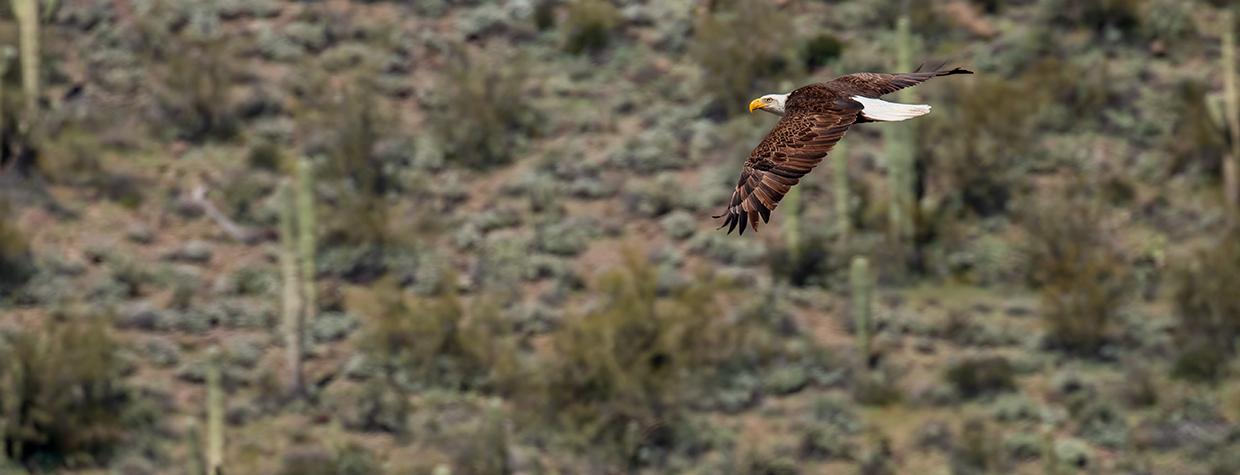When bald eagles were federally listed as endangered in 1978, Arizona was home to only 11 breeding pairs. Today, breeding bald eagles occupy more than 70 territories in the state — thanks, in part, to the efforts of the Maricopa Audubon Society. “Now, we have nesting bald eagles in the city limits of Phoenix,” says Mark Larson, a former Maricopa Audubon president. “That wasn’t anywhere near the case in the late ’70s, when the Nestwatch program started.”
Under that program — initially a partnership with the U.S. Forest Service — volunteers used telescopes to monitor eagles during nesting season, watching for noisy vehicles that could disturb them and observing what the parents brought their young. The program was a success, and it’s since been expanded into a paid multi-agency effort run by the Arizona Game and Fish Department.
Since Maricopa Audubon’s founding in 1953, its volunteers have been doing that kind of work to ensure that Maricopa County’s ecosystems and wildlife are protected. And it isn’t all about birds: This group of passionate conservationists collaborates with communities and legislators to protect all kinds of wildlife.
In fact, coordination with the community is essential to Maricopa Audubon’s mission. Programs and field trips attract volunteers and like-minded citizens who spread the word about Arizona wildlife and get involved in conservation. Members of the society, led by current President Emily Thomas, stay active in city council and other meetings to provide a voice for wildlife. “We have been active in the courts when necessary,” Larson says, “and we’ve been successful, I’d say more often than not, because of the brilliance not only of some of the people who have been a key part of our organization … but also because of the work of pro bono attorneys.”
For example, in 1981, the society and the Fort McDowell Yavapai Nation were able to block the construction of the Orme Dam, which would have flooded a bald eagle nesting habitat and tribal land near the confluence of the Salt and Verde rivers, northeast of Phoenix. That success, which came at the end of a 10-year legal battle, is still commemorated at the tribe’s annual Orme Dam Victory Days.
Field trips are another important component of the society’s mission. Volunteers and participants travel the county for nature walks where participants can admire butterfly, dragonfly and desert tortoise populations. “We try to get people enamored with nature, and then they’ll feel a conservatorship toward protecting that land,” says Laurie Nessel, the society’s newsletter editor. “You don’t have to be a member of our society to join our field trips. We welcome everyone — that’s our goal. We want everyone to learn about how wonderful nature is here in Arizona.”
Maricopa Audubon’s publications include a birding guide now in its third edition, along with a quarterly newsletter, The Cactus Wren-dition. The society’s poet laureate, David Chorlton, shares his poetry in the newsletter and at the group’s meetings. He lives near Phoenix’s South Mountain Park and draws inspiration from birds he sees in his backyard. “What I wrote along the way was helping me look [at birds] more sharply, and it often resulted in something to pass along to others — kind of like a hopefully thoughtful postcard in words,” he says.
To commemorate its 70th anniversary, Maricopa Audubon plans to reprint pages from its archives, including work from the group’s first newsletter. Plenty has changed over those seven decades, but Charles Babbitt, another former president, says the focus has remained the same: advocacy for “environmentally sound public lands policy and management, with an emphasis on habitat and endangered species.”
PHOENIX Maricopa Audubon Society, maricopaaudubon.org

